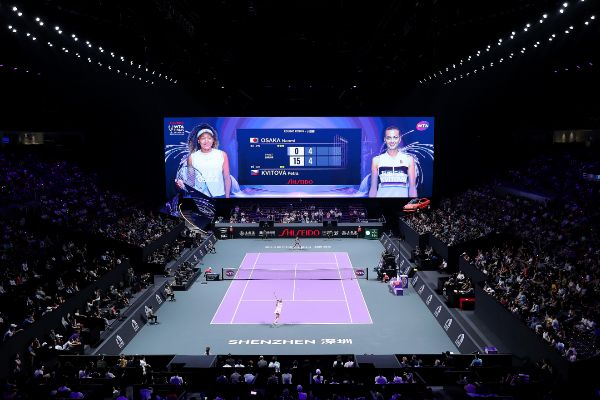In Shenzen, just over 30 kilometers from the Hong Kong upheaval, the eight best players of the year dispute the most lucrative tournament in history. For the first time, they will have a larger bag than men's, in a new expression of the sign of the times. There are 14 million dollars at stake and the champion can win 4,730,000, an economic reward that would also mean a record.
The Chinese city, which already has another women's tournament and takes over a decade from Singapore as the headquarters of the WTA Finals, enjoyed the first two individual matches on Sunday. Naomi Osaka beat Petra Kvitova 7-6 (1), 4-6 and 6-4, in a replica of the last Australian Open final. Ashley Barty, winner in Roland Garros, was guaranteed to conclude the season as world number 1 thanks to the win against Belinda Bencic: 5-7, 6-1 and 6-2.
Barty, Osaka, Kvitova and Bencic, framed in the Red Group, and Karolina Pliskova, Elina Svitolina (defender of the title), Bianca Andreescu and Simona Halep, who will litigate in the Purple, are the protagonists of a tournament of extraordinary symbolic value. The fight to achieve prizes equal to those of men was born with the same professionalization of tennis. Before the start of the 1970 US Open, the famous promoter Jack Kramer organized the Pacific-Southwest Championship in California, offering $ 12,500 of a bag for men and 1,500 for women. The grievance went further: those who were eliminated before the quarterfinals would not charge anything.
Nine players, with the legendary Billie Jean King in the lead, rose against Kramer and, at the risk of not being able to play the Grand Slam tournaments, launched the Virginia Slims Invitational on September 23, 1970, in which they would play for the symbolic amount of one dollar. It was the embryo of a circuit of exclusively women's tournaments and the creation in 1973 of the WTA.
A long fight
But the process to achieve the matching in awards would be long. Until 2007, when Wimbledon decided to standardize its economic gratification, the same consideration was not given to the winners in the four Grand Slam tournaments.
Since Sunday, at the Bay Sports Center in Shenzhen, with a capacity for 12,000 spectators, the incentives stipulated by six million are exceeded by those stipulated for the eight players who will play the men's homologue tournament starting on day 10 at the London O2 . Next Sunday, the champion will exceed the maximum amount received by a man or a woman in this sport, which is still in the 3.1 million dollars won by Rafael Nadal and Bianca Andreescu in the last US Open. China, where tennis was a sport watched with suspicion until Li Na was made in 2011 with Roland Garros, is now one of the temples of the rampaging expansion of rackets in the juicy Asian market.
The colossal booty of this female Masters is another revitalization factor of a circuit where, unlike the male, new air begins to be seen in the elite. Proof of this has been the emergence of players capable of discussing the established power. Naomi Osaka, who has just turned 22, opened the door with her victory over Serena Williams last year at the US Open, ratified at the beginning of the course in Melbourne, and Andreescu, 19, took another knock on imposing American veteran last September in New York.
Even without such a rennet, but with obvious samples of great projection, there are tennis players like Coco Gauff, 15, who won his first title two weeks ago in Linz, and Amanda Anisimova, 18, a semifinalist in Roland Garros. This Sunday, in Zhuhai, a two-hour drive from Shenzhen, Aryna Sabalenka, 21, took the fifth title of her career.
According to the criteria of The Trust Project
Know more- Rafael Nadal
- tennis
TennisThe Mallorca Championships: grass and night games in 2020
TennisNadal will return to 'number one' before the end of the year
Tennis Rafa Nadal's way to close the year as number one for the fifth time

